YORK — They trundle down the off-ramp from Interstate 95 by the hundreds, a long parade of hissing air brakes and roaring turbocharged diesel engines.
Each of the delivery trucks, tour buses and hulking long-haul tractors towing 53-foot trailers is about to get a checkup.
Waiting for them is a team of state troopers, specially trained in evaluating truck safety and enforcing federal commercial vehicle rules, part of the constant balancing act between ensuring public safety and allowing commerce to flow freely.
“Our goal isn’t to destroy these guys and bury these companies in fines,” said Sgt. Eric Bergquist of the Maine State Police Commercial Vehicle Enforcement Unit. “It’s to make sure we have safe vehicles.”
Their job is more important now than ever. Traffic deaths involving trucks have climbed since 2009, when 3,147 people were killed, the lowest figure since 1975, mirroring overall traffic deaths. Last year, 3,852 people died on American roads in crashes with large trucks, according to federal crash data analyzed by the Insurance Institute for Highway Safety.
To help keep drivers safe, Bergquist and his cohorts help perform a sliver of the roughly 3.5 million roadside safety checks completed annually.
The checks are designed to prevent the type of crash that killed two people a few miles from this weigh station in November, when a truck driver from Lowell, Massachusetts, failed to stop for slowing traffic.
Behind the wheel of the Hino box truck was John Kamau, 56, the sole proprietor of Kamway Services, a company that federal investigators later discovered had flouted virtually every safety regulation designed to prevent such a crash. Earl Gray, 57, of Waterboro, and 5-year-old Wyatt Frost, his passenger, were killed when Gray’s car was crushed between a tractor-trailer in front of him and Kamau’s box truck, which landed on top of the passenger vehicle.
Although Kamau had failed three of the four safety checks performed by regulators for license violations and was not allowed to continue driving, he was cleared to drive in the last of the inspections, which was performed in Maine in October.
State and federal authorities have declined to speak about those inspections or Kamau, citing the ongoing investigation into Kamau that could result in criminal charges.
‘WEIGH STATION OPEN’
Most motorists have the luxury of ignoring the bright sign declaring “WEIGH STATION OPEN,” as they did on a recent Wednesday afternoon in York.
But not Bryan Mobley.
Mobley, 62, is a truck driver for Western Express, one of the nation’s largest commercial carriers, and although he is less than an hour from dropping off a load of breakfast cereal in Scarborough, his day is about to get a little longer.
Bergquist, the state police sergeant, watches information flash across two computer screens inside the main weigh station house.
As each truck leaves the highway toward the weigh station, sensors embedded in the pavement weigh the vehicle. Cameras snap photos of each truck and read the DOT number that by law must be displayed on both sides of every vehicle that engages in highway commerce.
That number is used to pull up a bank of information about that truck carrier, including an all-important safety rating. Federal regulators look at every carrier’s history, violations and conduct, and use an algorithm to generate a score from 0 to 100 that goes up as a carrier is found to be out of compliance with the rules.
At the York weigh station, this score is the basis for a fast-paced sorting process. Any truck with a score above about 75 gets flagged for extra attention. Everyone else is waved through and merges back onto the highway.
When Mobley is flagged into the right-hand lane and bends around to a secondary scale, his vehicle is subject to another bank of sensors, these even more high-tech. Two heat-sensing cameras snap pictures of each of his tires as he passes, showing whether his brakes work properly and whether he has any flat tires. Reading this information is Trooper Jack Dow, the scale master for the day. Like a radiologist trained in reading X-rays, Dow can look at a tire or axle’s heat signature and know whether the brakes are working or a tire has gone flat.
Brakes, Dow said, generate heat from friction as they stop the truck. An axle without any heat could mean a faulty brake. Tires also have a unique heat pattern. When properly inflated, the side of a tire will not show much flex under the weight of the truck. But a flat or underinflated tire will bulge and sag as it rolls down the road, and all of that flexing generates friction, which shows up on the screen as heat.
LAW GIVES LATITUDE
In a side lot near the scales, Mobley shuts down his rig, and Bergquist slides two big chocks of wood between the tires. They swap paperwork at the side of Bergquist’s cruiser.
Unlike a normal traffic stop, police don’t need a reasonable suspicion that a crime has taken place to pull over a commercial vehicle, Bergquist said. He could choose to pull over every red truck or purple truck. The law allows him that latitude, he said.
Mobley, who has been driving trucks for 20 years, said he is used to the routine. He hands over his license, along with medical paperwork that shows a doctor has cleared him to drive. He also shows Bergquist the bill of lading that describes what’s inside his trailer. Today it’s a load of Post cereal he is hauling from Pennsylvania to Scarborough.
Mobley does not own his truck and is one of about 2,650 drivers for Western Express, a Tennessee carrier with 2,570 vehicles on the road.
Asked whether he is stopped for inspections often, Mobley said it happens once every couple of months.
“I just happen to have the lucky number today,” he said.
He is right.
The safety score for Western Express is 99, meaning that its overall history of crashes, safety violations and other factors will often lead someone such as Bergquist to select a truck from the company for extra scrutiny. Of the roughly 10,000 inspections performed on Western Express trucks in its history, inspectors found a violation about 63 percent of the time, according to federal records.
As Mobley sits patiently in his cab, Bergquist checks his driver history, tapping away at a computer in his SUV.
After returning the paperwork to Mobley, Bergquist hops into the cab to perform an inspection of his living quarters, and thumbs through a touch-screen computer that keeps track of Mobley’s hours.
“You got to be off for Christmas?” Bergquist said, as he looked at late December’s work schedule. “Nice!”
Federal regulations permeate every aspect of a trucker’s life, far beyond the hours they are allowed to drive in a given period. Even the type and thickness of the mattress in their sleeping quarters are proscribed in the rules. Bergquist said the feds used to mandate the color of a trucker’s sheets, but have since relaxed on that point.
Bergquist hops down from the cab and pulls a mechanic’s creeper from his SUV.
In a flash, he has wheeled himself completely under the cab, measuring the function of the air brakes, checking for leaking oil or bad wheel bearings, and ensuring the steering system is free from slop or excessive play, searching bumper to bumper for anything unsafe.
Mobley phones his company to let them know he will be late.
Once out from under the truck, Bergquist tells Mobley what he has found: a slow leak in one of his air brakes, but it is not serious enough to sideline the truck. He also found a check-engine light illuminated and a busted windshield fluid sprayer pump.
By the time Mobley cranks the massive engine back to life and is on his way, he has been delayed more than an hour. Bergquist has recorded the violations but declined to write any tickets, part of his discretion.
Mobley said he plans to flag the issues for his company, and with any luck the problems will be addressed that evening before he leaves the state again.
“An inspection is an inspection,” Mobley said, shrugging. “Safety is safety.”
Send questions/comments to the editors.


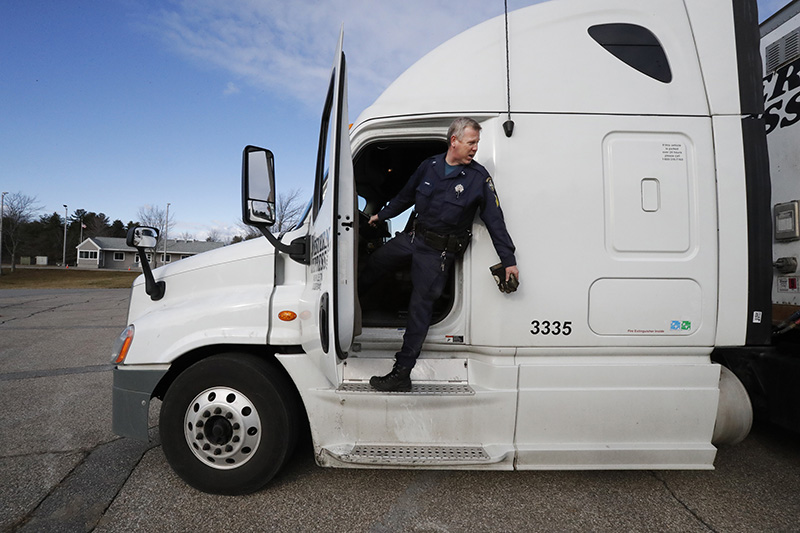
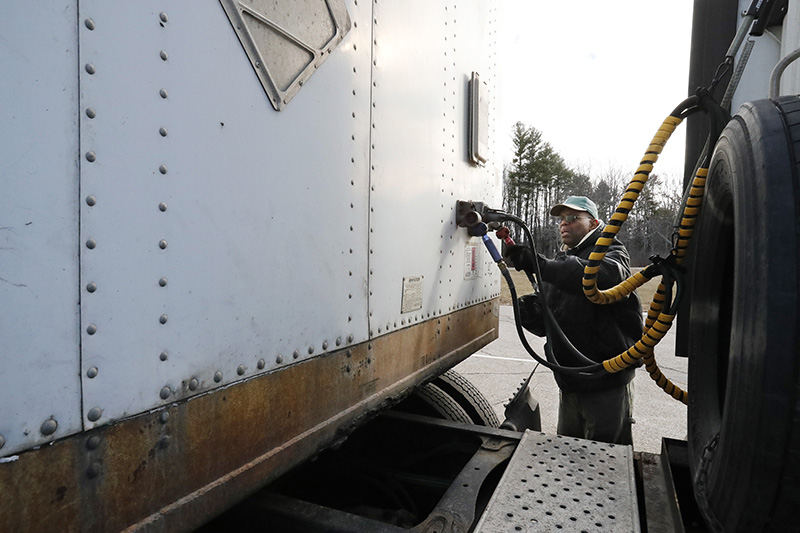
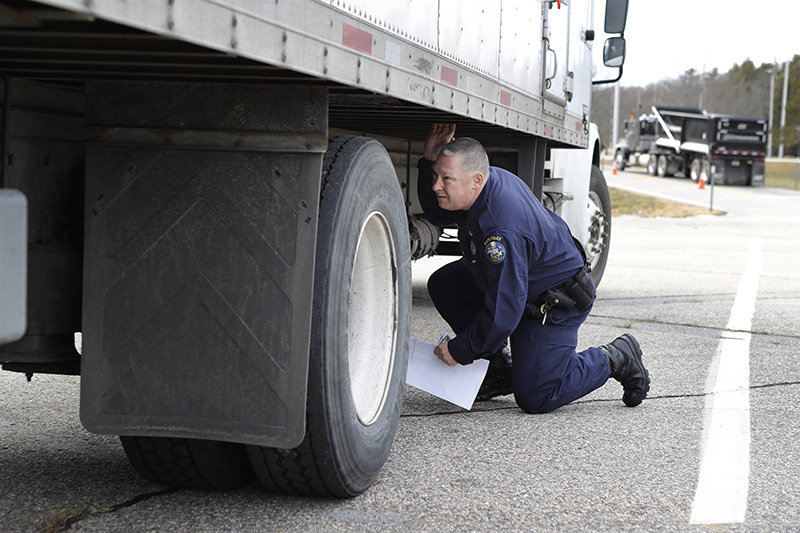
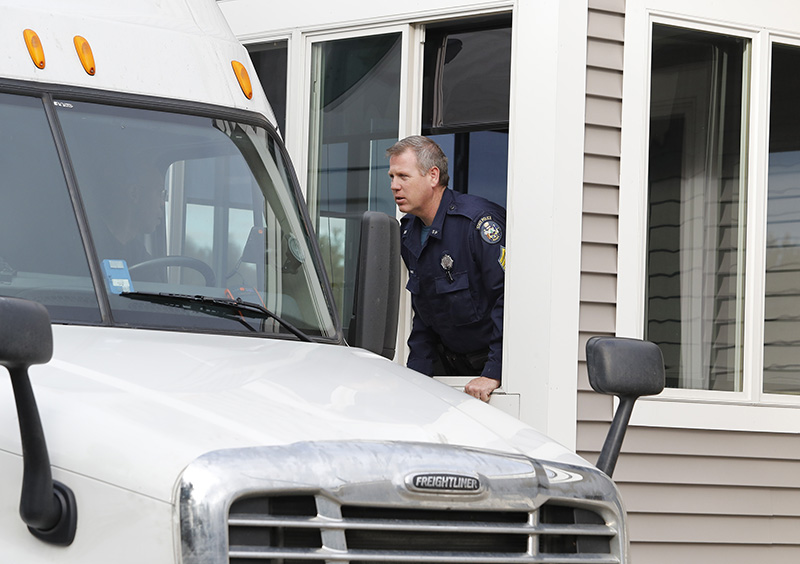
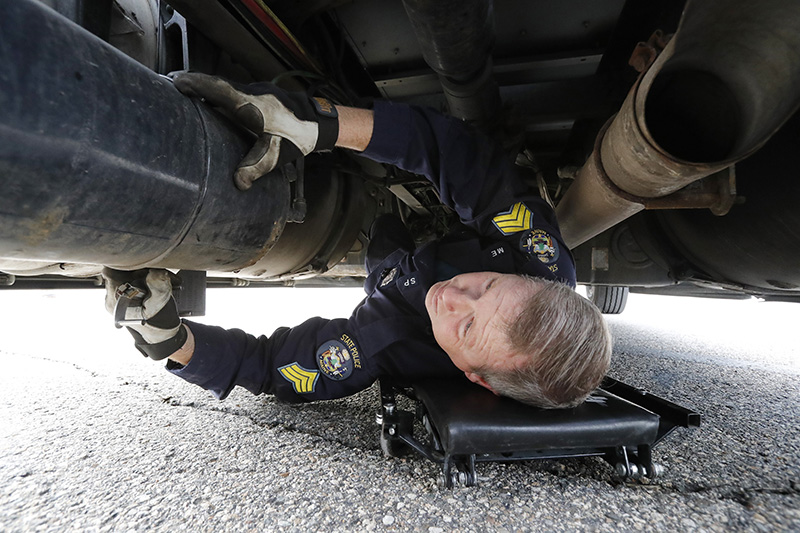
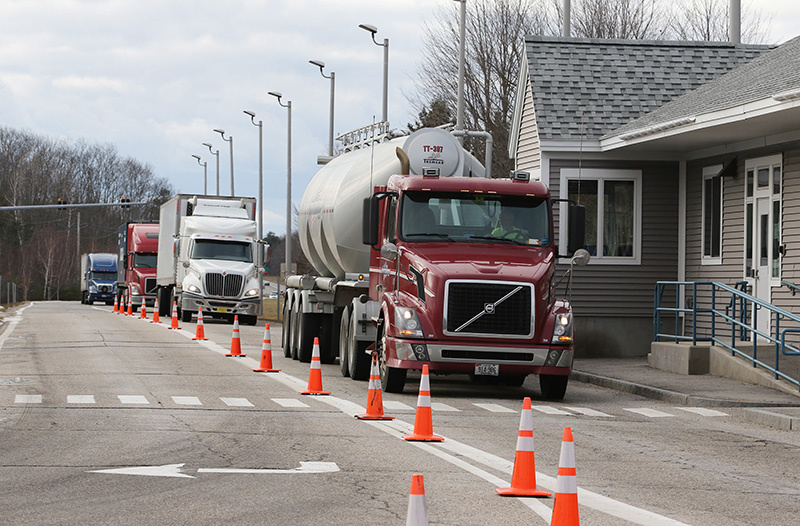
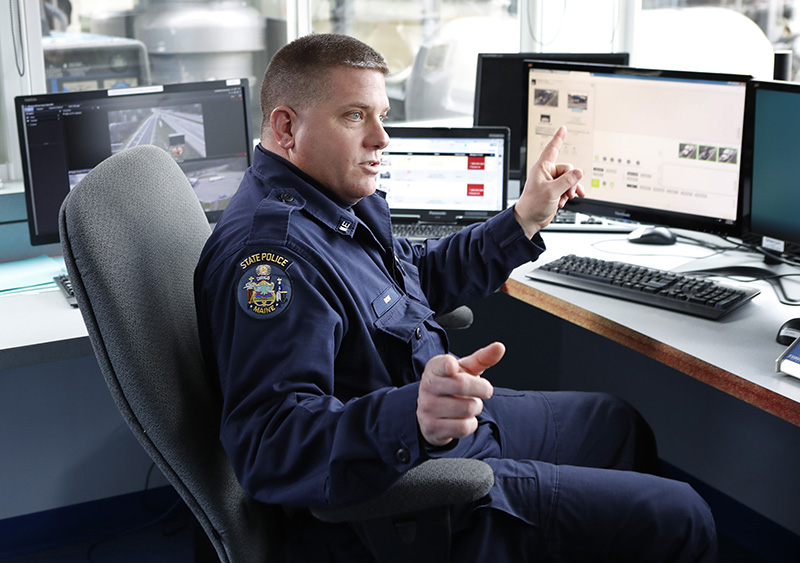
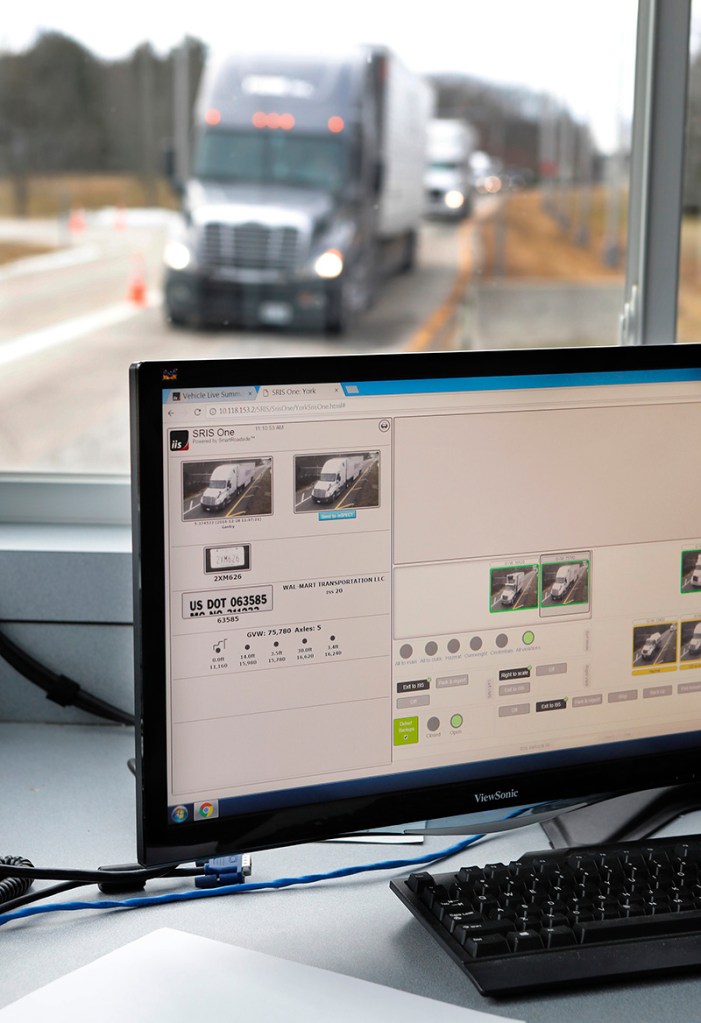
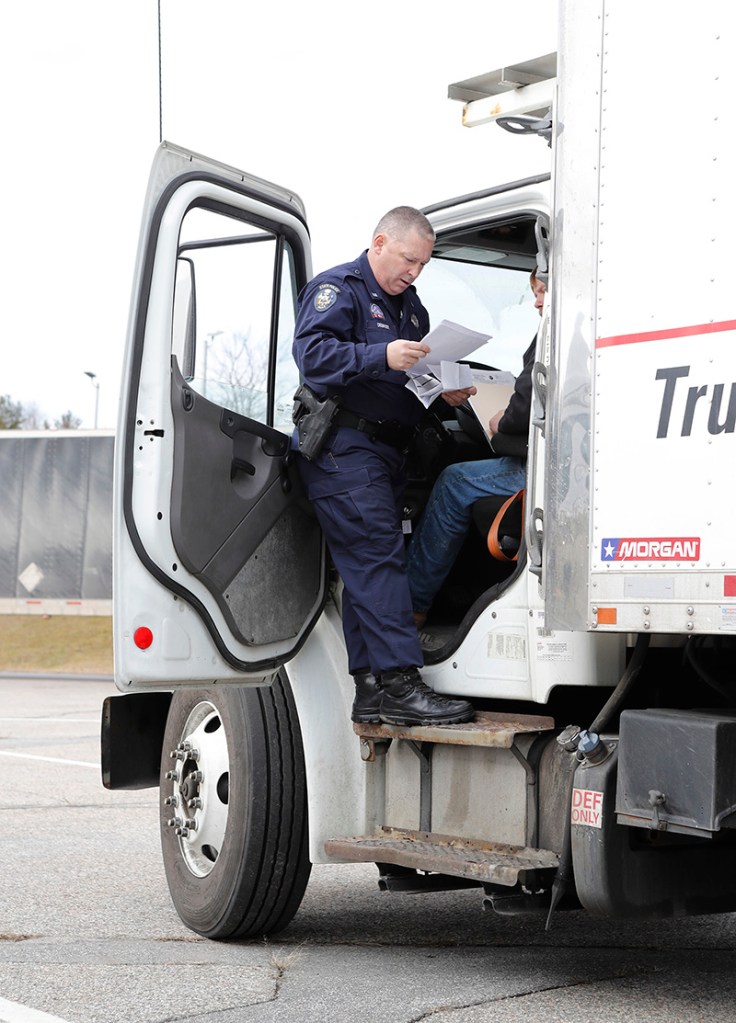

Success. Please wait for the page to reload. If the page does not reload within 5 seconds, please refresh the page.
Enter your email and password to access comments.
Hi, to comment on stories you must . This profile is in addition to your subscription and website login.
Already have a commenting profile? .
Invalid username/password.
Please check your email to confirm and complete your registration.
Only subscribers are eligible to post comments. Please subscribe or login first for digital access. Here’s why.
Use the form below to reset your password. When you've submitted your account email, we will send an email with a reset code.